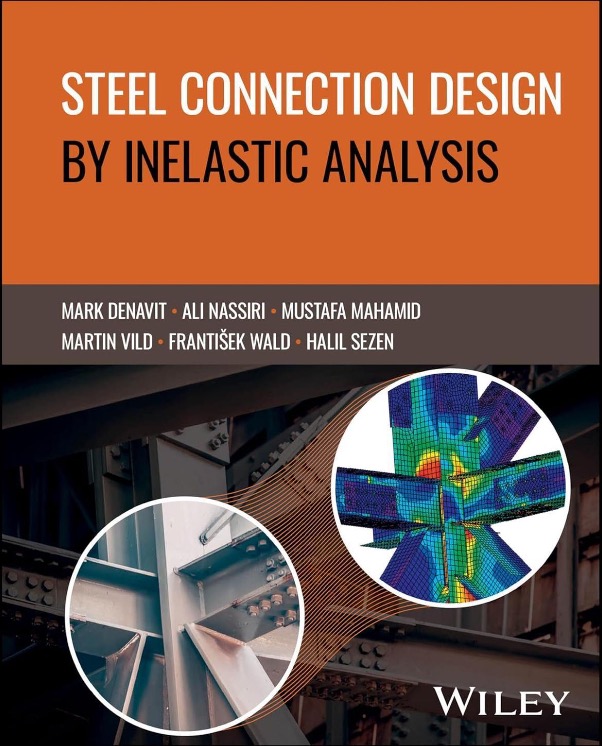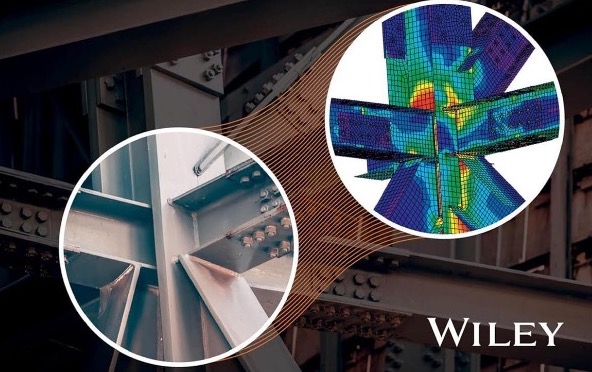University of Illinois Chicago & Technion Institute of Technology Research Professor and Brindley Engineering Structural Engineering Consultant Mustafa Mahamid, PhD, SE, PE, F.SEI, F.ASCE, F.ACI, and team, release Steel Connection Design by Inelastic Analysis. The newly released book covers the use of the finite element method in structural steel connection design.
Dr. Mahamid along with a team of highly qualified authors came together as a research team for IDEADStatiCa, who supported the research. The book was recently published by Wiley in August 2024 and is a verification of IDEASTATICA-Component Based Finite Element Method (CBFEM) with AISC 360 specifications. We sat down with Dr. Mahamid to learn more about the project, and it’s intended outcomes.
Q: Why this topic?
A [MM]: With the increased complexities in structures, it is important to model structures accurately in a way that captures all failure modes and load distributions among the different elements. This is performed and achieved only by three-dimensional modeling. This topic focuses on steel connections that range from simple connections to complex connections. In day-to-day design, the design of steel connections is time consuming and requires pages of calculations. The methodology and the verification presented in this book allows engineers modeling even complex connections in a reasonably short time, helps engineers see all connection details in 3D as it is built in the field, and see the results visually.
Additionally, with the advent of technology in our field, inelastic analysis can be used and is required in some cases, this topic uses inelastic analysis for steel connections with verification with AISC specifications to allow engineers gain confidence in this advanced method and use it.
Q: How long did it take you to write the book?
A [MM]: The research and verification work took several years by Ohio State University, University of Tennessee, Knoxville, and University of Illinois at Chicago. Putting our work in a book with editing took about 18 months.
Q: What do you hope the readers will take away from the book?
A [MM]: Readers will definitely gain confidence in using the methodology through reading and understanding the background and through the many verification examples presented.
Readers of this text will benefit from understanding at least the basics of structural design, ideally through civil, structural, or mechanical engineering programs of study.
Steel Connection Design by Inelastic Analysis includes information on:
- T-stub connections, single plate shear connections, bracket plate connections, beam over column connections, and end-plate moment connections.
- Bolted wide flange splice connections, temporary splice connections, and chevron brace connection in a braced frame.
- Brace connections at beam-column connection in a braced frame and double angle simple beam-to-column connections.
- Semi-rigid beam-to-column connections, covering code design calculations and comparisons, IDEA StatiCa analysis, and ABAQUS analysis.
Q: Who are your coauthors and is there a story about how you all decided to work together?
A [MM]: The coauthors are Mark Denavit, Ali Nassiri, Martin Vild, František Wald, and Halil Sezen. We all came together as a research team for IDEADStatiCa who supported this research. It was fun to work through research and transfer that to an easy and reliable tool that engineers can use.
Q: What else is important about the topic and the timing of the book?
A [MM]: The topic is very important based on an efficient methodology, and it is a must know and must use by structural engineers to be more efficient in the workplace.
Steel Connection Design by Inelastic Analysis is an authoritative reference on the subject for structural engineers, Engineers of Record (EORs), fabrications specialists, and connection designers involved in the structural design of steel connections in the United States or any territory using AISC 360 as the primary design code. There will be an official release by IDEASTATICA at the NCSEA Summit in Las Vegas in November.
- See more of Dr. Mahamid’s published work on Brindley Engineering’s Blog.
- Learn More about Dr. Mahamid.



0 Comments